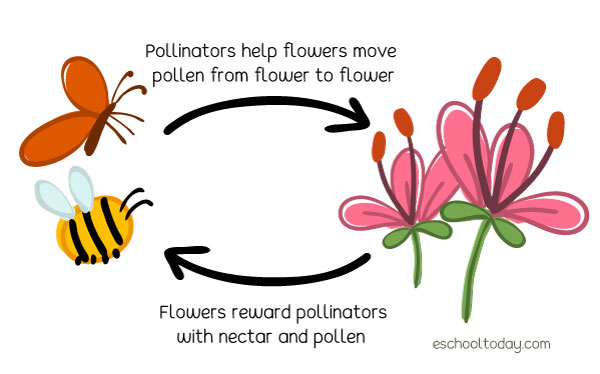- Pollination
Introduction to Pollination.
Before we dig into this exciting lesson of pollination, be sure to check out the lesson on asexual reproduction and sexual reproduction. That will give us a better understanding of this lesson.
Living things live and die. For species to live on, new ones need to be produced. In plants, some structures ensure that new plants are produced as older plants die. One way is that plants can reproduce by asexual means (no male and female required). The other way is by sexual means. In sexual reproduction in plants, reproductive male and female cells interact to produce viable seeds.
That is where it gets interesting.
Flowers do not mate on their own. They do not move and see like other animals do, so to have any chance of male and female cell interaction, they need a little help from other living organisms such as bees, butterflies, and many insects and birds.
In return for this help, plants give these helpers a treat, a very sweet liquid called nectar. These helpers are called pollinators. Nectar is simply sugar, produced inside the flower to attract these pollinators. This means that flowers that do not produce nectar are going to have to find a way to attract these helpers or find other ways to reproduce.

So, you can see that there is a special, mutual relationship between flowers and pollinators. Flowers give pollinators nectar, and pollinators help male flower cells meet female flower cells. The scientific term for this mutual relationship is symbiosis.
Did you know: Pollen researchers found that pollen contains protein (range from 2.5-61%). Pollen provides most of the dietary nitrogen for most bees and beetles. It also supplements the diets of consumers such as bats and birds.
Before we get into the details of this wonderful process of pollination, we have to understand the basic parts of a flower and the functions of its parts.
Sources:
1. WHAT GOVERNS PROTEIN CONTENT OF POLLEN:
POLLINATOR PREFERENCES, POLLEN–PISTIL INTERACTIONS, OR PHYLOGENY? https://naldc.nal.usda.gov/download/30628/PDF (accessed on Aug 29th, 2018)
